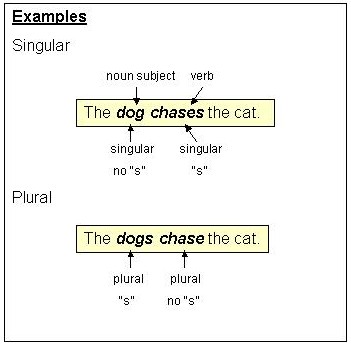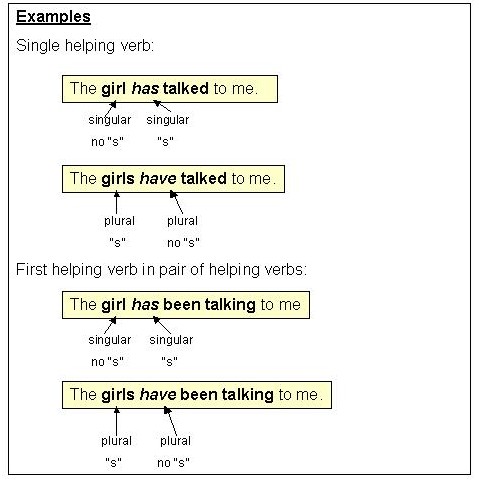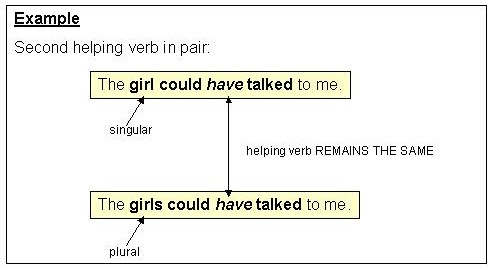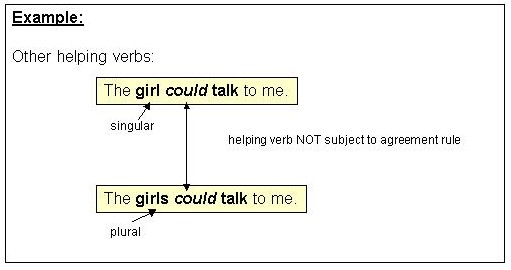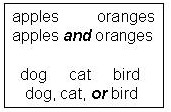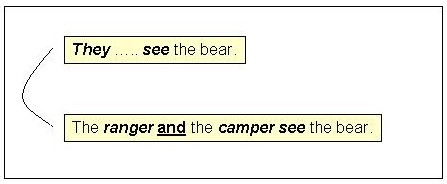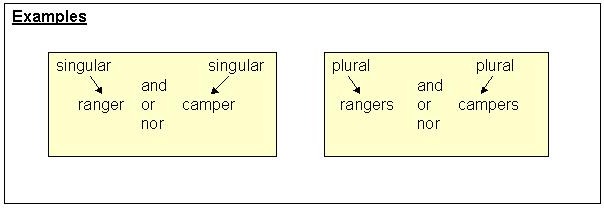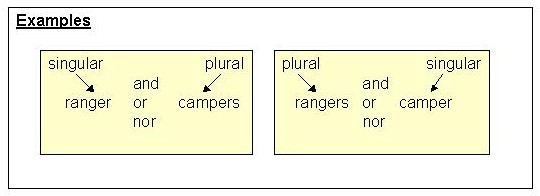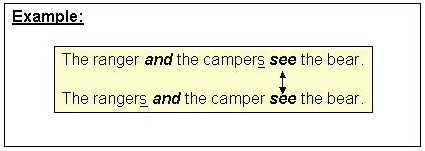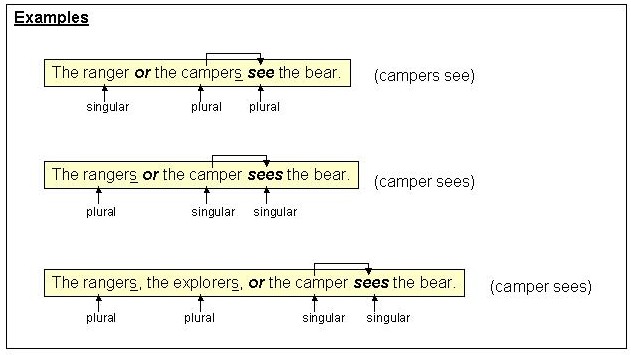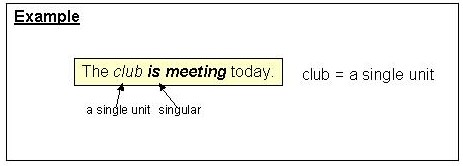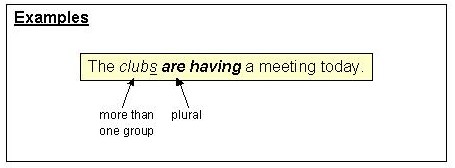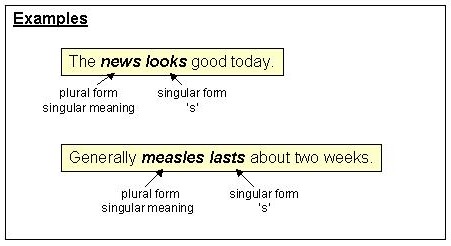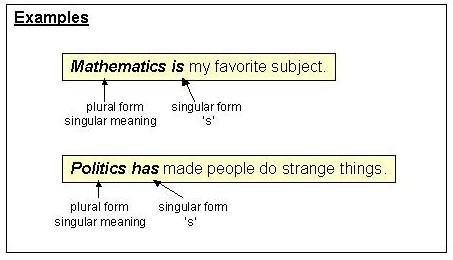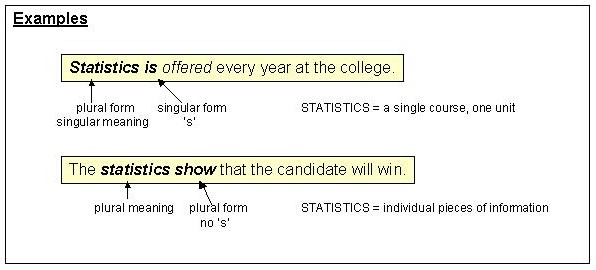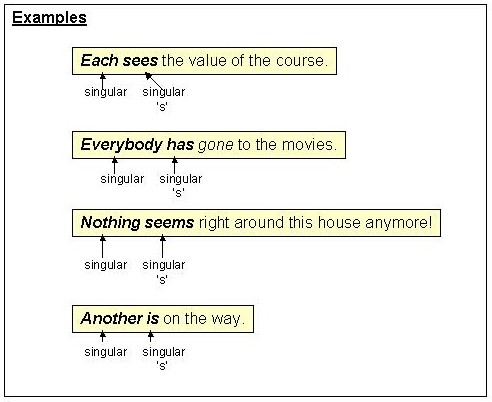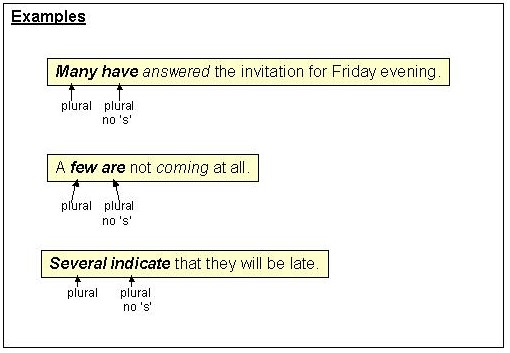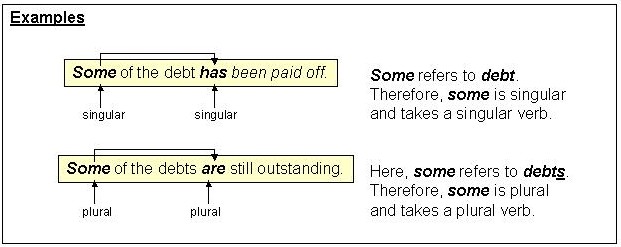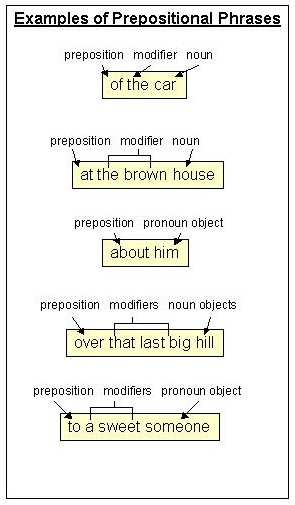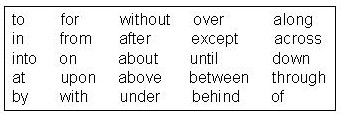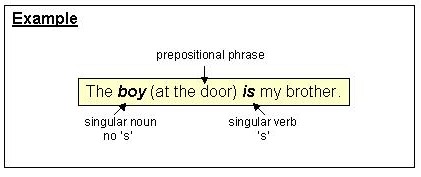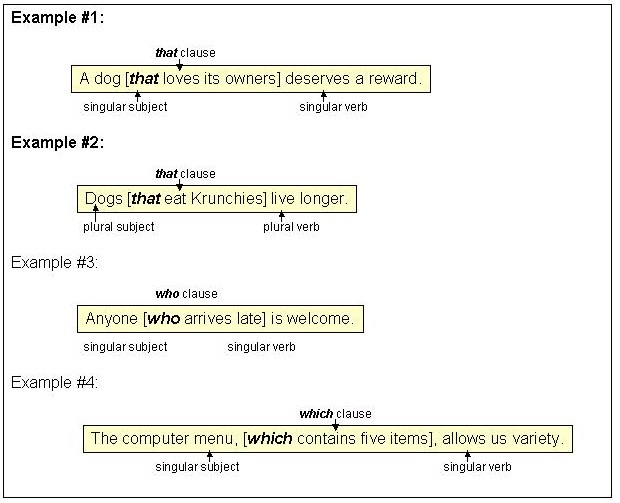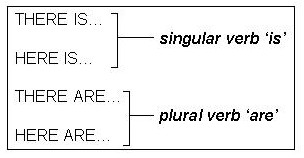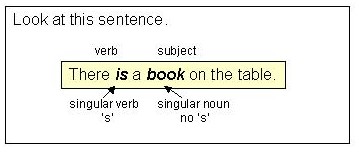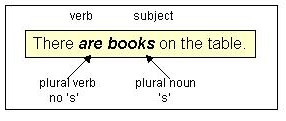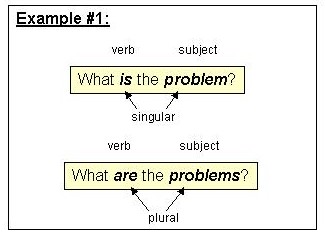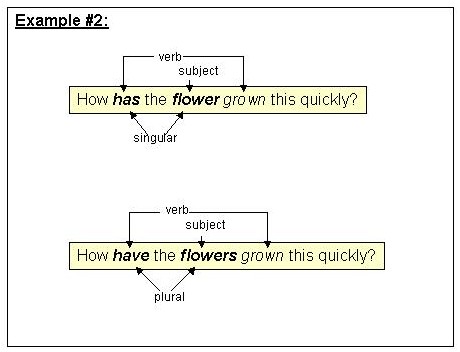Nouns and pronouns in English are said to display case according to their function in the sentence. They can be subjective or nominative (which means they act as the subject of independent or dependent clauses), possessive (which means they show possession of something else), or objective (which means they function as the recipient of action or are the object of a preposition).
Except for the possessive forms (usually formed by the addition of an apostrophe and the letter s), nouns do not change form in English. (This is one of the few ways in which English is easier than other languages.) Pronouns, however, do change form when they change case; these changes are most clearly illustrated among the personal pronouns. The chart below illustrates the different forms among the cases.
Subjective Possessive Objective Nouns Singular frog frog's frog Mary Mary's Mary Plural frogs frogs' frogs witches witches' witches Personal Pronouns Singular 1st person I my, mine me 2nd person you your, yours you 3rd person he
she
ithis
her, hers
itshim
her
itPlural 1st person we our, ours us 2nd person you your, yours you 3rd person they their, theirs them Relative and interrogative pronouns who whose whom whoever whomever which/that/what which/that/what Indefinite pronouns everybody everybody's everybody
Jayden and I versus Jayden and Me
For some writers and speakers, the case of a pronoun becomes especially troublesome when that pronoun is compounded with something or someone else. When the pronoun is being used as a subject, there is usually no problem:
Jayden and I are playing tennis this afternoon.
Jayden and she are playing tennis this afternoon.
We learn this lesson so well — getting cuffed on the ears and being forced to stand in the corner when we say "Jayden and me are playing tennis. . . " — that when the object form of the pronoun is truly called for, we're apt to come up with the subject form instead, as in "Grandma left Jayden and I her rocking chair," which is bad form, indeed.
There is a simple rule here that seems to work very well, at least in writing. Ask yourself what pronoun form you would use without adding the other person — "Grandma left me her rocking chair" (coming up with the correct form for the indirect object) — and then, when you add the other person, don't change the form of the pronoun: "Grandma left Jayden and me her rocking chair."
This rule works whether the pronoun is being used as an indirect object, as above, as a direct object — "The policeman stopped Jayden and me" — or as the object of a preposition — "Grandma gave her rocking chair to Jayden and me." Some writers and speakers will mistakenly say "This is just between Jayden and I," not realizing that the preposition "between" calls for the object form of both pronouns, including "me."
The rule also pertains to sentences in which a pronoun is compounded with yet another pronoun: "Grandma gave her rocking chair to him and me, but that's just between you and me."
Notice that when "I" is compounded with another subject, the "other person" or people get first billing: "Jayden and I are playing," not "I and Jayden." This is one of the very few polite forms in English.
Choosing Cases after Linking Verbs
and after But, Than, and As
In formal or academic text, we need the nominative or subject form of the pronoun after a linking verb: "It was he who represented the United Nations during the 1960s," "That must be she on the dock over there." In casual speech and writing, however, that sounds awfully stuffy. Imagine the detective who's been looking for the victim's body for days. He jimmies open the trunk of an abandoned car and exclaims, "It's she!" No self-respecting detective since Sherlock Holmes would say such a thing.
When the personal pronoun follows except, but, than, or as, you've got an argument on your hands. Traditionally, these words have been regarded as conjunctions and the personal pronoun that follows has been regarded as the subject of a clause (which might not be completed). Thus "No one could be as happy as I." (If you provide the entire mechanism of the clause — "as I [am]" — you see the justification for the subject form.) The same goes for these other conjunctions: "Whom were you expecting? who else but he?" "My father is still taller than she" [than she is].
Many grammarians have argued, however, that these words are often used as prepositions, not conjunctions (and have been used that way for centuries by many good writers). In a structure such as "My mother is a lot like her," we have no trouble recognizing that "like" is acting as a preposition and we need the object form of the pronoun after it. Why, then, can't we use "than" and "but" as prepositions in sentences such as "Dad's a lot taller than him" and "No one in this class has done the homework but me"? Such usage is now widely regarded as acceptable in all but the most formal writing. The same argument is sometimes used for the object form after as — "The coach is not as smart as me" — but this argument does not enjoy the cogency of using the object form after but and than.
Garner* argues that when the pronoun precedes the but phrase, the objective case should be used ("None of the students were interested but him"); when the but phrase precedes the verb, the subject case is appropriate ("None of the students but he were interested"). The argument goes that in the former case but is behaving as a preposition, in the second as a conjunction.
Choosing Cases in the Appositive Position
An appositive is the renaming or amplification of something earlier in the sentence. In the sentence "Ronald E. Pepin, translator of several Latin texts, will speak at our symposium on translating dead languages tomorrow," the phrase "translator of several Latin texts" is a re-identification of the person's name, an appositive. Occasionally, pronouns can fall into the appositive slot of a sentence and that can create questions about case. If the appositive is renaming something that functions as a subject, the pronoun should take the subject form; if the appositve is renaming something that functions as an object, the pronoun must take the object form.
- The two people in charge of the symposium, Micki and I, will help pay for the damages. (where "Micki and I" renames the subject, "two people")
- Nobody in the auditorium, not even he, expected that a riot would break out. (where "he" agrees with the subject "nobody")
- My favorite professors, Dr. Pepin and she, gave interesting talks. (where "she" corresponds to the subject "professors")
- Great Grandmother Etherea left her money to her favorite people, Jayden and me. (where "me" agrees with the object of the preposition "people")
- The bank credited two different groups, the Stamp Club and us, with making deposits on the same day. (where "us" agrees with the object "groups")
When a sentence with compounded pronouns sounds intolerably klutzy, the sentence will have to be rewritten. "The group gave certificates of recognition to the two oldest members, him and me" might sound better as "The group gave certificates of recognition to him and me [or 'to both of us'], the two oldest members" or "He and I, the two oldest members of the group, received certificates of recognition."
Choosing Cases When Pronouns Are Combined
with Other Subjects/Objects
Occasionally pronouns are connected to other subjects or objects in the sentence. In that case, the case of the pronoun can be important and errors are apt to be made, especially in the object position. Generally, the choice becomes obvious when you drop the noun or noun phrase that the pronoun is combined with.
- We students can no longer tolerate the administration's mismanagement of funds. [We can no longer tolerate … ]
- The administration has given us students no alternative. [… has given us no alternative.]
In the second person, this is not really a problem, because the form of "you" remains the same whether it is singular or plural, subject or object.
- You students need to take care of this situation on your own.
- I'm giving you students three months to come up with a solution.
Choosing Cases in Exhortations Beginning with Let
When a pronoun follows "let" in a mild exhortation, we use the object form of the pronoun. We say "Let us go then," but we're apt to slip in the subject form, especially when the pronouns are compounded: "And now, let you and I take the first step toward reconciliation." (It should read "let you and me … ") And in the Biblical admonition, we read "Let he who is without guilt cast the first stone." (It should read "Let him who is without guilt cast the first stone.")
Choosing Cases in Captions
Let's say you're putting together a photo album, and there's a nice photo of you and Grandpa, fishing. Should the caption read "Grandpa and Me, Fishing on Lake Pymatuning" or "Grandpa and I, Fishing"? The nominative form, "Grandpa and I," sounds awfully formal and highfalutin for this purpose, and we can reasonably argue that the objective form, "Grandpa and Me," is a kind of shorthand for "This is a photo of Grandpa and Me. … " The choice between formal-stuffy and casual-acceptable is up to you.
